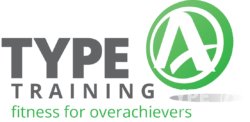Running is something humans have done for ages—sometimes out of necessity, sometimes just for fun or fitness. These days, maybe you run to stay healthy, clear your head, or just to enjoy being outside.
Funny enough, even though running is so basic, most of us never really get taught how to do it right. Think about it—you probably learned how to ride a bike or throw a ball, but not how to run well.

There’s no one-size-fits-all running form. The best technique depends on your body and what you want out of your runs.
Popular posts:
If you pay attention to your form, you can run more comfortably, perform better, and dodge a lot of common injuries. Even small tweaks can add up.
Key Takeaways
- Small changes to running form can lower injury risk
- Your best technique depends on your body and running goals
- Good habits and rest support long-term progress
1. Head: A Balancing Act

Your head position sets the tone for your whole running form. When you’re running (not sprinting), keep your head naturally above your shoulders.
Try not to drop your chin or jut your head forward. Just let your eyes look ahead, not down at your feet.
During different running speeds:
| Activity | Where to Look | Head Position |
|---|---|---|
| Jogging | Toward the horizon | Head upright, relaxed |
| Sprinting | About 20 meters ahead | Slight chin tuck is ok |
If your head’s balanced, your neck and shoulders relax a bit. This can help you avoid tension and breathe easier.
But tilt your head too far up or down and, honestly, you’ll probably notice running just feels off. It can mess with your posture and make things harder than they need to be.
Want to see how you’re doing? Have a friend film you running. Then compare your posture to a skilled runner at the same speed. You might spot habits you never realized you had.
A balanced head position seems simple, but it really does help your whole body move better. Sometimes the small stuff matters most.
2. Torso: Lean Just A Little
Your upper body naturally twists side to side when you run. At an easy pace, that’s fine, but as you speed up, try swinging your arms a bit more to limit that rotation.
A stronger arm swing helps balance your torso and keeps your movement efficient. For most runs, keep your chest upright and straight.
If you’re picking up the pace or sprinting, a slight forward lean can help. It shifts your weight just enough to take some pressure off your knees.
If knee pain’s an issue, try leaning forward just a bit from your ankles (not your waist) and see if it helps reduce impact.
Tip:
- Instead of bending at the waist, tilt your whole body forward from your ankles.
- Keep your body in a straight line, not hunched or slouched.
Adding a gentle forward lean (and maybe some light compression gear) can help your form and take some strain off your joints.
3. Legs: Softer Landings and Smoother Steps
For a smoother, more comfortable stride, pay attention to how your legs land and push off. Try to land lightly, letting your knees and ankles bend a bit when your foot hits the ground.
If you notice your legs twisting underneath you, work on keeping your movement straight and controlled. This helps avoid extra stress on your knees and ankles.
Don’t forget about your hips. If you keep your pelvis steady (no dipping or twisting), you cut down on injuries and reduce joint strain.
It’s all about good motor control. That lets your muscles and tendons use elastic energy more efficiently.
Try to avoid bouncing up and down between steps. A gliding, low-to-the-ground motion is easier on your body and lets your stretch reflex and elastic energy do more work for you.
Here are three quick ways to improve your stride:
- Shorten your stride: Smaller steps mean softer, smoother landings.
- Pick up your feet: As you speed up, bend your knees more and let your feet lift higher under you.
- Use your hips: Push back with your hip, swinging your leg forward like scissors to get better extension.
Practice these habits and you’ll start to feel your steps get smoother and softer over time.
4. Arms: Built-In Shock Absorbers
Your arms aren’t just for show—they help absorb shock and keep you balanced, especially on uneven ground. If you relax your arms, they’ll swing naturally and help your body deal with little bumps or trips.
Tense arms can’t do their job as well. Keep your elbows bent and your shoulders loose. This keeps your arms’ weight close to your body, saving you some energy.
When you sprint, your arm movements get faster and more powerful. The arm that swings back (your “drive arm”) extends fully and helps steady your body. The arm swinging forward (the “recovery arm”) stays bent and moves a bit slower.
Key Tips for Effective Arm Use
- Keep elbows bent close to your sides
- Relax shoulders and arms
- Let arms swing naturally with your stride
For more on this, check out resources about improving running form.
5. Feet: How You Land Matters
Your foot strike—how your foot hits the ground—makes a big difference in both comfort and performance. Some folks land on their heels, others on the ball of their foot.
The way you land changes where the stress goes. Heel striking can put more force on your knees, while landing on your forefoot shifts it to your calves and Achilles.
If you’ve had knee or calf injuries, think about your foot strike. Changing it might help, but go slow so your body has time to adjust.
Good posture and solid running form support healthy landings. And of course, wearing supportive shoes can help keep your feet and body in a safer position.
6. Add Other Exercises and Rest Days to Your Plan
Mixing in cross-training and rest days really helps you become a stronger, healthier runner. If you run every single day, your muscles and joints take a beating.
Adding different workouts and recovery days gives your body a break and keeps things balanced.
What Cross-Training Means for Runners
Cross-training just means doing exercise that isn’t running but still boosts your fitness. Stuff like cycling, swimming, yoga, rucking, or weight training works your muscles in new ways.
This helps prevent overuse injuries and lets your running muscles rest, while you stay active.
Examples of cross-training activities:
- Cycling (road, mountain, or stationary)
- Swimming or aqua jogging
- Yoga or stretching routines
- Elliptical workouts
- Rucking (walking with a weighted backpack)
- Weight or resistance training
- Dance or aerobic classes
These activities build strength, boost fitness, and can even make running feel easier. Cross-training is also handy if you’re coming back from a minor injury and need something lower-impact.
Why Recovery Days Matter
Rest days aren’t lazy—they’re when your body repairs and gets stronger. They matter just as much as your hardest runs.
You don’t have to sit still, though. Light movement like walking or gentle yoga counts as active recovery and can help with soreness and stiffness.
If you skip recovery, you’ll probably feel more tired, burned out, or even get hurt. A little walking, stretching, or a light swim can make a big difference in how you feel for your next run.
Benefits of Cross-Training and Rest for Runners
| Benefit | How It Helps You Run Better |
|---|---|
| Reduces injury risk | Less repetitive stress on same muscles and joints. |
| Builds full-body strength | Works muscles that running sometimes misses. |
| Improves cardio fitness | Your heart and lungs work in new ways, boosting stamina. |
| Prevents burnout | You won’t get bored doing the same workout every day. |
| Speeds up recovery | Fresh muscles and joints let you run more consistently. |
| Boosts mental sharpness | Variety keeps you motivated and engaged. |
Rucking: A Useful Cross-Training Exercise
One cross-training option a lot of runners like is rucking, which is just walking with a weighted backpack.
Rucking builds strength in your legs, core, shoulders, and back. It also raises your heart rate, so you get a cardio workout that’s similar to running but with less impact.
Key points about rucking:
- Uses many of the same muscles as running, so it fits runners well.
- Lets you get outside for fresh air and nature time.
- You can adjust the weight and pace to match your fitness.
- Puts less stress on your joints than running, which your knees and ankles will probably appreciate.
- Improves posture since you need to stand tall with that weight on your back.
You really don’t need special gear for rucking.
Just grab a backpack and add some weight—books or dumbbells work. Start light and go heavier as you get stronger.
Practical Tips for Adding Cross-Training and Recovery Days
- Schedule 1–2 cross-training days each week. Try cycling, swimming, yoga, or rucking.
- Have at least one full rest day in your week. Let your legs and body recover.
- Mix intensity. Use some cross-training workouts as “easy days” after a hard run.
- Listen to your body. If you feel very sore or tired, make your recovery day extra gentle, with just light walking or stretching.
- Stay consistent. The benefits grow over time as your body adapts.
Choosing Activities Based on Your Needs
If you want a break from pounding the pavement but still want a workout, go for lower-impact options like swimming or cycling.
Trying to build muscle or balance? Add strength training or yoga. If you want both cardio and strength, rucking is honestly a solid pick.
Sample weekly plan:
| Day | Activity |
|---|---|
| Monday | Run (speed) |
| Tuesday | Cross-training (cycling or rucking) |
| Wednesday | Run (easy pace) |
| Thursday | Rest or yoga/stretch |
| Friday | Run (long distance) |
| Saturday | Cross-training (swim or strength) |
| Sunday | Rest or gentle walk (active recovery) |
Change this up however you need, depending on how you feel.
How Cross-Training Supports Recovery
When you switch up your workouts, your running muscles get a chance to recover.
Staying active with different exercises keeps your fitness up and helps lower your injury risk.
On days off from running, try something else instead.
Cycling works your quads and glutes in a new way. Yoga helps with flexibility and breathing, which is great for bouncing back.
Active Recovery: A Simple Approach
Active recovery means gentle movement—think walking, easy swimming, or yoga.
You get your heart rate up just a bit, which brings more blood and nutrients to sore muscles. This helps with stiffness and might even speed up recovery.
If you’re extra sore after a tough workout, keep the next session light.
Go with less weight, move slower, or pick something lower impact. Your body will thank you later.
Cross-Training and Recovery: Preventing Injuries
Running every day, especially on hard ground, can really beat up the same muscles and joints.
That’s how overuse injuries like shin splints or stress fractures sneak up on you. Mixing in cross-training days gives those body parts a break.
Exercises like rucking, swimming, or yoga make your whole body work together.
This balances out weak spots and keeps you moving well. When you return to running, you’ll probably feel fresher and stronger.
For more on why cross-training helps runners, check out how different activities can improve running performance and reduce injury risk.
Cross-Training, Recovery, and Running Goals
Whether you’re chasing a marathon or just want to enjoy running more, cross-training and rest days really matter.
Mixing in lower-impact workouts builds strength and keeps things interesting.
Rucking and weight training help build muscles you use for running.
Even yoga can improve your posture and help you run more efficiently.
If you’ve got big running goals—like a new distance or PR—balancing running with other activities helps you get there safely.
Signs You Need a Recovery Day
If you notice these, it’s time to rest or go easy:
- You feel tired and sluggish, even after a good night’s sleep.
- Your legs feel heavy, or you have muscle soreness that won’t go away.
- Workouts you normally enjoy start to feel harder than usual.
- You lose motivation or start dreading your runs.
Taking a rest day at these times helps you avoid injury and come back stronger.
Tracking Your Cross-Training and Recovery
Writing down your workouts is actually super helpful.
You’ll spot patterns and know when to push or back off.
| Day | Main Activity | How You Felt | Notes |
|---|---|---|---|
| Monday | Run (tempo) | Tired but strong | Warmed up well |
| Tuesday | Rucking | Light soreness | Used 15 lbs, felt good |
| Wednesday | Rest | Rested | Needed extra sleep |
| Thursday | Swim | Refreshed | Easy, relaxing pace |
After a few weeks, you’ll probably notice how cross-training and recovery days help you avoid burnout.
Customizing Your Routine
Every runner’s different.
You might need more or fewer rest days than someone else. Some folks bounce back fast, others need more downtime. Age, training history, and your goals all play a part.
Try different types of cross-training and see what clicks.
Some people love rucking outdoors, others like swimming or cycling inside. The main thing? Listen to your body and adjust if you feel worn out.
Cross-Training for Enjoyment and Motivation
Trying new workouts isn’t just good for your body—it’s good for your brain, too.
Cross-training keeps things fresh and helps you avoid getting bored. Runners who mix in rucking, yoga, or swimming often say they’re more excited to run again.
If you enjoy your workouts and feel strong, you’re way more likely to stick with running long-term.
You also cut your risk of injury, so you can keep running for years to come.
Want more ideas for cross-training? Check out these tips on cross-training for runners.
Recap Table: Why Mix in Cross-Training and Recovery?
| Reason | What Happens | How It Helps You Run |
|---|---|---|
| Reduces fatigue | Muscles heal and rebuild | More energy for running |
| Builds strength | Uses different muscle groups | Stronger legs and core |
| Avoids injuries | Less repetitive stress | Fewer days lost to injury |
| Boosts motivation | Adds variety | Stay excited to train |
| Improves recovery | Helps muscles flush soreness | Faster bounce-back |
Frequently Asked Questions
Which Biomechanical Issues Often Lower Running Efficiency?
Stuff like overstriding, collapsed arches, hip drop, and bad posture make running less efficient.
If you take steps that are too long or land heavy on your heel, you waste energy and risk injury. Weak hips, core, or unstable ankles mess with your form and slow you down, too.
How Does the Way You Land on Your Foot Influence Running Performance?
Where your foot hits—heel, midfoot, or forefoot—changes how your body absorbs impact.
A forefoot or midfoot strike usually puts less stress on your knees, while a heel strike can slow you down with extra braking forces. The “best” strike really depends on the runner. Paying attention to foot placement helps you avoid injury and run smoother.
What Strength Exercises Help with Better Running Form?
Squats, lunges, calf raises, and glute bridges build the muscles you use most while running.
Focus on your core, hips, glutes, and legs. Resistance bands, bodyweight moves, or light weights all work. Regular strength training supports good running biomechanics and helps you sidestep injuries.
How Can Learning About Joint Forces Improve Your Running?
Understanding joint forces (kinetics) helps you see how your body moves and takes impact.
If you know how your joints handle loads, you can spot weak spots or habits that cause strain. Tweaking your knee, hip, or ankle angles can make each step smoother and safer.
Why Is Flexibility Important for Runners?
Flexibility lets your joints move through a full range without feeling blocked or tense.
If you keep your hips, legs, and ankles flexible, you’ll probably notice a smoother, longer stride. Stretching helps with that.
Staying loose cuts down on tightness and makes it easier to push off the ground. Plus, you might dodge a few injuries along the way.
What Are Ways to Study and Improve Your Running Form?
Want to check your running gait? Try recording yourself or team up with a coach.
Watch for things like stride length, arm swing, and where your feet land. It’s surprising how much you can catch just by looking at a quick video.
If something feels off, experiment with small tweaks. Maybe soften your knees when you land, or focus on keeping your upper body steady—sometimes that’s all it takes.
Drills and exercises that target your weak spots can really help you improve your running mechanics over time. No need to overhaul everything at once; little changes add up.












